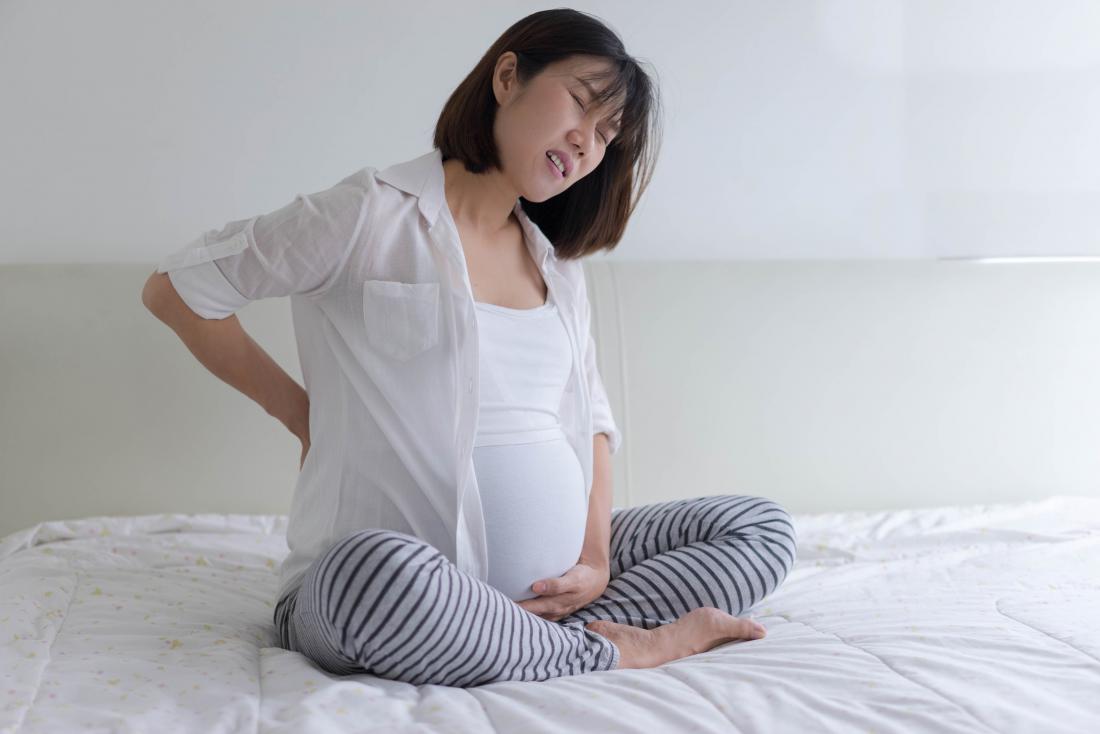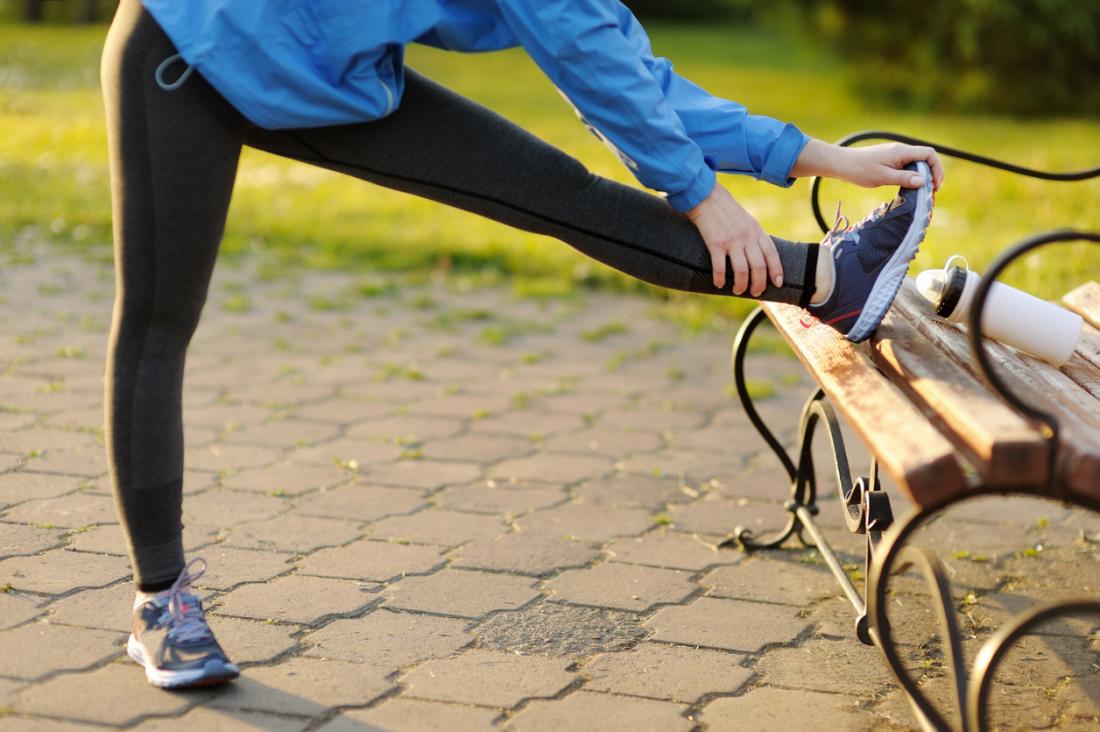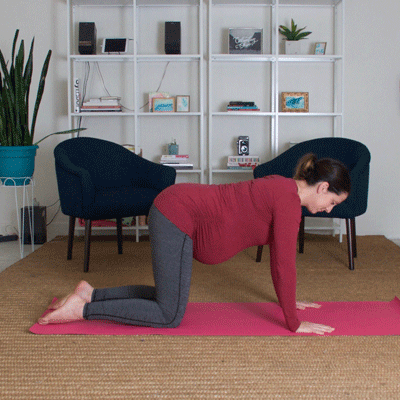Low back pain is one of the most common complaints during pregnancy, affecting more than two-thirds of women.
Sciatica is pain that irritation of the sciatic nerve causes. The main symptom is shooting pain that starts in the low back and radiates down the leg.
Sciatica is one of the less common causes of back pain during pregnancy. Sciatica is more likely to arise during the later stages when the fetus is large.
In this article, we look at the causes of sciatica during pregnancy, its symptoms, and ways to relieve this nerve-related pain during pregnancy with stretches, massage, and other remedies.
Causes

Symptoms of sciatica can include pain in the low back and legs.
Sciatica is a symptom of another problem rather than a condition in itself.
The sciatic nerve is a large nerve that branches off the spinal cord in the low back and runs through the buttocks and down the legs. This nerve helps the lower part of the back, legs, and feet to feel sensations, such as pressure, pain, and temperature.
During pregnancy, sciatica can arise if the growing uterus and fetus put pressure on the sciatic nerve, causing inflammation, irritation, and pain.
Less often, people may experience sciatica because of a slipped disc in the spine. Also, a spasm of the piriformis muscle deep in the buttocks can irritate the nerve and cause sciatica.
Symptoms
The primary symptom of sciatica is pain in the low back, buttocks, and legs. It can start in the low back and radiate down into the legs.
Other symptoms doctors associate with sciatica include:
- leg pain
- poor bladder control
- numbness, tingling, or pins and needles in the legs
- weakness of the low back or legs
- burning sensation in the lower extremities
- pain that worsens with coughing, moving, or sneezing
Women experiencing these symptoms during pregnancy should mention it at their next doctor’s appointment.
People can usually relieve the pain they connect to sciatica with some simple home remedies. In most cases, the pain will go away on its own within a few weeks.
Stretches
Light stretches in the back region are a great way to loosen up tight muscles and relieve pain from sciatica.
The American College of Obstetricians and Gynecologists recommend that women avoid exercises that involve lying on their back. This is because when in this position the uterus presses against a large vein that leads to the heart.
Try these stretches each day to relieve sciatica pain within a few weeks:
1. Seated piriformis stretch

The piriformis muscle is deep in the glutes, or muscles of the buttocks. Spasms in these muscles can cause sciatica pain. This stretch can help ease muscle tightness and reduce spasms.
To do the seated piriformis stretch:
- Sit on a chair with feet flat on the ground.
- Lift the left leg and place the foot on the opposite knee.
- Lean forward slowly, keeping the back straight, until you feel a stretch in the low back and glutes.
- Hold the stretch for 30 seconds.
- Repeat the move with the right leg.
2. Child’s Pose

Child’s Pose is a popular yoga position for people who are pregnant. This simple, restful pose will stretch the muscles in the lower part of the back and can help ease hip and leg pain.
To do Child’s Pose:
- Kneel on a soft surface or yoga mat.
- Touch the big toes together and spread the knees apart to make room for the belly.
- Sit with the back straight.
- Inhaling, reach the arms above the head.
- Exhaling, reach the arms forward and place the palms on the ground.
- Sit back, bringing the bottom towards the heels.
- Keep taking deep breaths, stretching the arms forward a little more with each breath, feeling the stretch in the low back and shoulders.
- Walk the hands back slowly and return to a kneeling position.
3. Standing hamstring stretch

Stretching the hamstrings, which are the large muscles along the backs of the thighs, can release tension in the back, legs, and glutes. This stretch will help keep flexibility in the muscles around the sciatic nerve.
To do the standing hamstring stretch:
- Stand upright with both feet on the ground.
- Raise the left leg and place it on a stable object, with the leg straight and the toes pointing towards the ceiling.
- Gently bend forward to stretch the hamstring muscle.
- Hold the position for 30 seconds.
- Gently place the foot back on the floor.
- Repeat the stretch with the right leg.
4. Kneeling lunges

Kneeling lunges work by loosening the muscles in the hips. This can ease pressure on the nerves and the muscles surrounding the hips, including the back and leg muscles.
To do the kneeling lunge:
- Kneel on a soft surface or yoga mat.
- Step the left foot in front so that the thigh is parallel with the ground.
- Exhaling, shift your body weight forward to feel a stretch in the hip and the leg.
- Hold the stetch for 30 seconds.
- Repeat the move with the right foot.
Gentle exercise
Doing gentle exercises during pregnancy can strengthen the abdominal and back muscles to reduce the risk of further pregnancy-related back pain.
People with sciatica can speak to a doctor before doing specific exercises to ensure they are safe.
Brisk walking, stationary cycling, yoga, and swimming are good options. Swimming can be especially beneficial for people who have pain in their lower back, as the buoyancy of the water can relieve pressure on the joints and muscles.
Learn more about how to exercise safely during pregnancy here.
Massage
Gentle massage over the lower section of the back can help to relieve inflammation and discomfort around the sciatic nerve. A person should ensure their massage only involves light strokes and stops if it feels too strong or painful.
When finding a masseuse, it is best to choose one who specializes in pregnancy massage or has experience in this area.
People can also try self-massage at home using a tennis ball. In the early stages of pregnancy, try lying on the floor with a tennis ball under the lower part of the back, and rolling it gently around.
In the later stages of pregnancy, lean back against a wall or chair support with the tennis ball between your back and the wall.
Other remedies
In addition to massage and stretching, there are other things that people can do at home to prevent or manage sciatica during pregnancy, including:
- Avoid sitting for long periods by standing up and walking periodically.
- Use heat packs on the low back or buttocks.
- Take a warm bath.
- Take over-the-counter pain relievers, such as acetaminophen.
- Use a foam roller on the buttocks and lower legs. People can choose between foam roller brands online.
- Keep good posture when sitting, especially at a computer. Try placing a support pillow at the back of the chair.
Medical treatment
If home remedies are not improving pain associated with sciatica, a doctor may recommend steroid injections or a nerve block to help reduce the pain.
Doctors can recommend more advanced and surgical treatments for sciatica, but these are not usually appropriate during pregnancy. If the pain persists after the baby is born, a person can talk to their doctor about treatment options.
Diagnosis
Low back pain is common during pregnancy. Sciatica pain is less common, however. A doctor can help work out the cause of this type of back pain.
The doctor will first ask about a person’s history and do a physical exam. They may ask about the type of pain, what makes it better or worse, when it started, and about any other symptoms.
As part of the physical exam, a doctor may feel the painful area on the back or legs, or ask the woman to perform certain maneuvers, such as walking, squatting, or raising a straight leg. This helps to determine which nerve the pregnancy might be affecting.
Sometimes, doctors may ask for diagnostic testing to gain more information or rule out other more serious causes of the pain.
Imaging tests to help diagnose low back pain can include:
Risk factors
Besides pregnancy, people who are overweight or obese may also be at risk of developing sciatica from increased pressure on the back and spine.
Other people at risk for sciatica include:
- people who sit for long periods
- people who have jobs or do activities that cause a lot of twisting or heavy lifting
- people who are older
Prevention
There is no real way to prevent sciatica. Avoiding too much time spent sitting or in the same position can help, as can maintaining a healthy weight.
Also, protecting the back through regular stretching and exercise, and avoiding lifting with the back, are important.
Outlook
Sciatica, though uncomfortable, usually resolves within a few weeks. People can treat sciatica at home during their pregnancy.
If home remedies are not working, it is important to mention symptoms to the doctor in case a person needs further tests or more specialized treatment to improve their symptoms.

